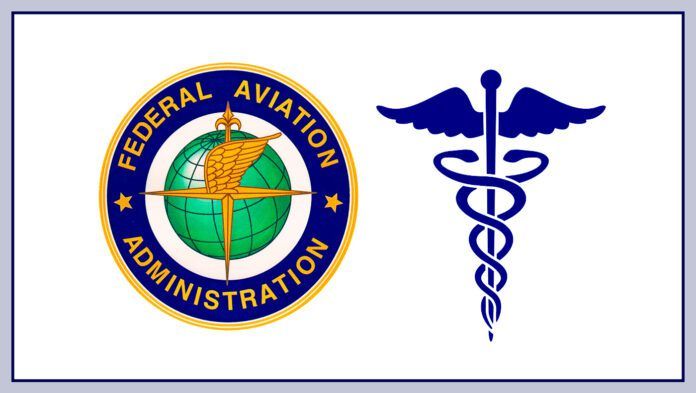With the stroke of a pen this month, Acting FAA Administrator Billy Nolen enabled an estimated 60,000 or more U.S. pilots to act as safety pilots. In the Nov. 16 signing of a new rule that focuses on requiring medical certificates for balloon pilots, other provisions were included that granted holders of BasicMed medical certificates the opportunity to fly as safety pilots, a right not previously held.
After a longtime effort to effect this change, the Aircraft Owners and Pilots Association (AOPA) supported the final rule, which amends elements of FAR Part 61 and Part 68 “to make BasicMed pilots eligible to act as safety pilots (required crewmembers other than the PIC),” according to AOPA reporting.
AOPA Senior Director of Regulatory Affairs Christopher Cooper said, “This change will allow for increased access and opportunities for training, proficiency, and experience for the entire pilot community. We also appreciate the FAA’s continued support for and expansion of BasicMed.”
The FAA characterized public comments received after the draft rule was published to be “generally supportive.” The new rule goes into effect Dec. 22.




































Good news. Closes a little known hole in the system. Took them long enough!
“The FAA characterized public comments received after the daft rule was published to be “generally supportive.”
What the %$#@ would the ‘public’ know about the medical certification issues as it pertains to a safety pilot? I’m sure it was required to open to discussion with whatever random busybodies.
You are the ‘public’… I watch and respond to these proposals all the time. I have three current issues with training. The 1500 hr time for ATP is not just silly, but likely impresses dangerous habits. The time and requirements for private pilot are severely lacking in energy management training given to commercial pilots. Commercial pilot should be just a regulation test. Why would a private pilot not need to know every maneuver a commercial pilot learns?
And the there is the people that still think doing a 180 after entering the clouds is a good idea. It is crazy and dangerous. Only after be educated and thinking about it do pilots finally agree. Where did that 180 come from?
Why would a private pilot need to know how to perform a lazy-8 or chandelle? Neither have any practical purpose, other than demonstrating mastery of those maneuvers (yes, they’re supposed to teach control precision and how all 3 axes interact with each other, but I find most pilots don’t get the connection). The only useful commercial maneuver is the steep spiral leading to a power-off 180 landing.
In the helicopter world, the commercial checkride is exactly the same as the private pilot, except to tighter tolerances. If it were up to me, I would change the private/commercial airplane checkride to also be the same, but add in the power-off 180 to both and have the commercial flown to tighter tolerances.
Just commenting on the 180 upon inadvertently hitting IMC – it makes perfect sense as it’s the proven way for a VFR-only pilot to get back to the last – and on that moment the only – known VMC in as little a minute. All someone needs to be able to do is to keep the AI centered, perform a normal level 180, and the scare for the VFR pilot is soon over. That’s why it’s part of Private Pilot training.
The very people you hate have been inviting your input for decades and you didn’t even know it. Think about it William. You could be spending less time promoting your personal world view on AvWeb and more time commenting on FAA proposed rulemaking.
The ATP rule is beneficial, however I think the quality of time is more important than the quantity. 1500 hours in the pattern is worthless. When I was a regional Capt. I could tell the difference immediately with new hires. If they were a flight instructor I have to be the instructor on the line, if they had been with cape air, or another 135 with turboprop or jet experience flying REAL IFR it was obvious. I cannot imagine what it was like for a regional captain teaching EVERYTHING to a 250 hour wonder FO. AND I cannot imagine flying a regional jet around with only 250 hours. There was so much I did not and could not know at that point in my experience.
Amen.
Well when you consider the incidents of in-flight pilot incapacitation after being coerced or forced to take the jab.
Remember the 135 pilot who lied on his medical and went into insulin shock, leaving a student pilot to land the (King Air?)
I’m still a little unclear what this rule actually does. The only safety pilot I can think of is when the other pilot is under the hood practicing IFR in VFR conditions. Fixed-wing wise where else does it apply?
Basic Med required the pilot holding the Basic Med medical clearance to be acting as
Fumble fingers: Currently, the Basic Med pilot has to act as PIC. When acting as safety pilot, they have to be PIC, so the other pilot is SIC. You can log required instrument time as SIC.
The Basic Med pilot has to be qualified in category/class, and the airplane cannot exceed the limitations of BM: 6 seats, 18,000 feet, and so on.
First FAR: If a FAR is written so a pilot understands it, it shall be rewritten.
There seems to be some debate over whether acting as a safety pilot to someone under the hood, or being under the hood with a safety pilot, can be logged as SIC time. I have generally understood that neither can be logged as SIC. However, the safety pilot can legally act as PIC, and the person under the hood can log PIC (for purposes of instrument currency) even without acting as the legal PIC.